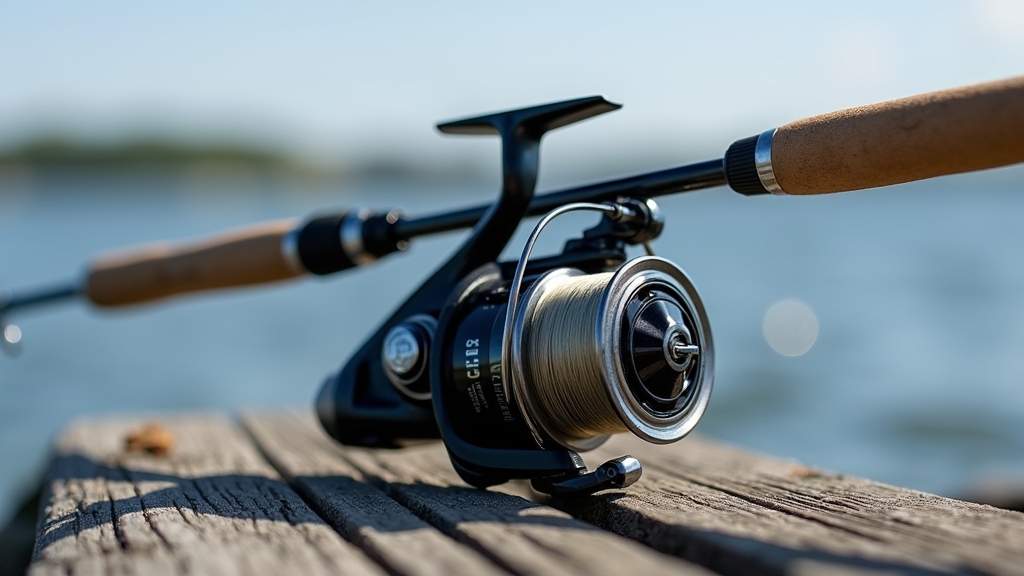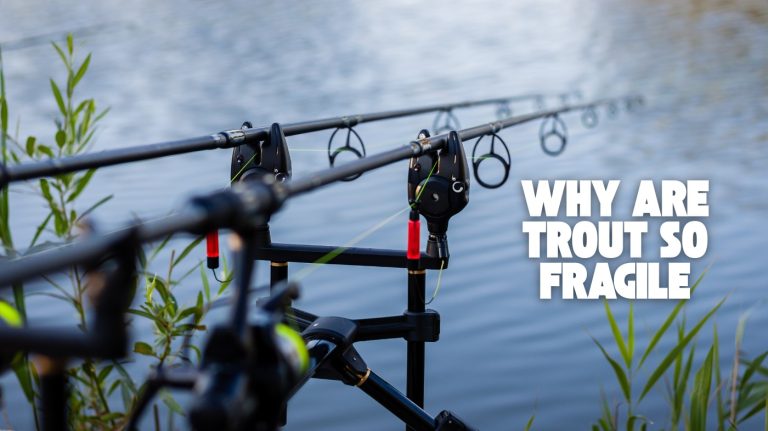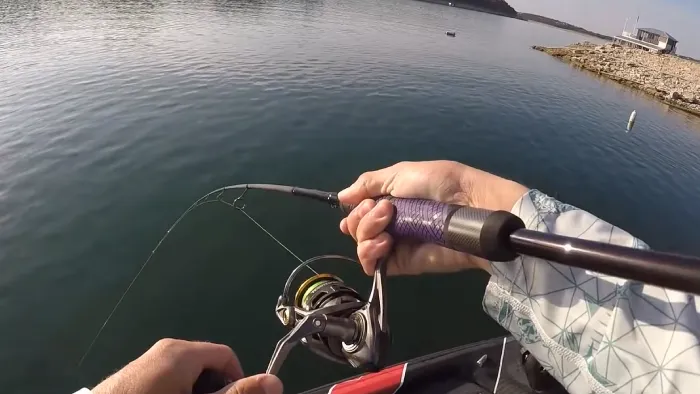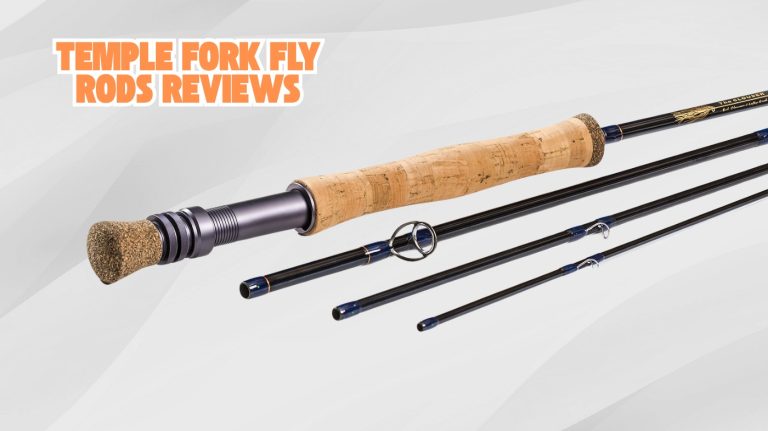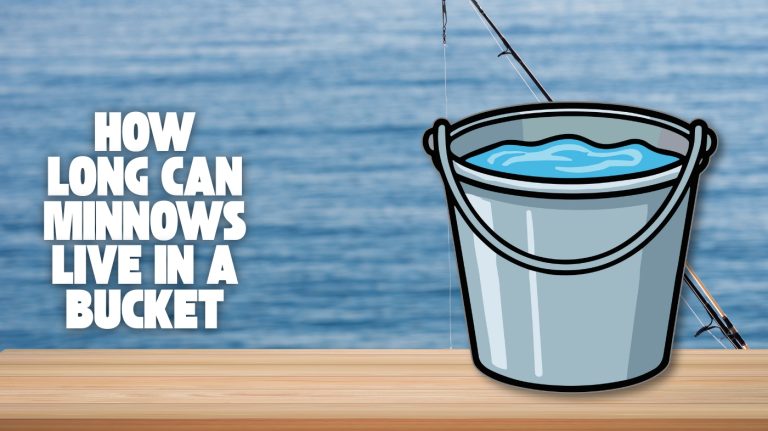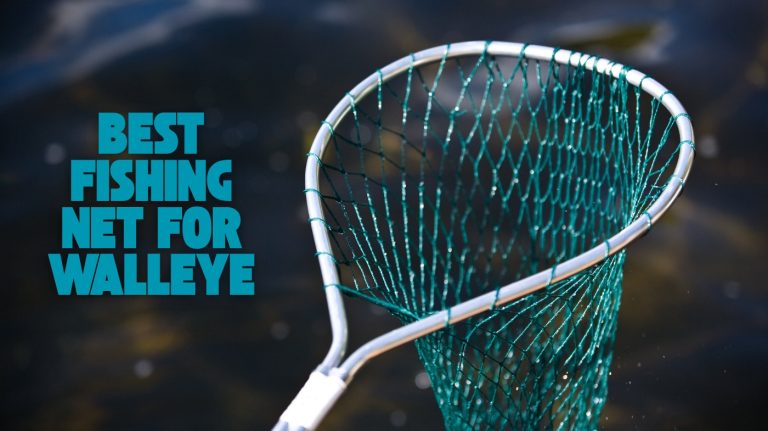How to Cast a Baitcaster? Step-by-Step Guide for Beginners
To cast a baitcaster, hold the rod firmly with your thumb lightly on the spool. Depress the thumb bar to free the spool, then smoothly bring the rod backward and initiate a forward swing.
As you release your thumb at the peak, feather pressure to control spool speed and prevent backlash. Adjust spool tension and brake settings based on lure weight for ideal casting.
With practice, your thumb control and brake tuning will improve, enhancing your casting precision and distance.
Key Takeaways
- Hold the rod with a relaxed grip and thumb lightly resting on the spool to control line release during the cast.
- Press the thumb bar to disengage the spool, smoothly bring the rod backward, then swing it forward to generate casting momentum.
- Lift your thumb off the spool at the release point and feather it to prevent backlash and control line flow.
- Adjust spool tension so the lure descends slowly without overrunning, and set magnetic or centrifugal brakes based on lure weight.
- Apply firm thumb pressure immediately after the cast to stop spool rotation and prepare for the hook set.
Components and Setup of a Baitcaster
Although baitcasters come in various designs, understanding their core components is essential for effective setup and use.
The frame, made from metal or graphite, provides the reel’s durability and rigidity, while the foot and reel seat secure it firmly to the rod, ensuring stable alignment for smooth line flow. This secure connection between reel and rod is essential for performance.
Ensuring the reel is properly matched to the rod type prevents issues such as line tangles and reduced casting efficiency.
Grasping the key parts of baitcasters ensures optimal setup and smooth, efficient fishing performance.
The spool holds and releases your line, with materials like aluminum balancing strength and lightness to reduce inertia. Your line guide evenly distributes the line onto the spool, preventing tangles. Adjust spool tension carefully to avoid backlash, as the tension knob helps control spool speed and reduces line tangles.
The drag system, near the handle, controls line resistance during fights, with carbon fiber washers ensuring smooth pressure. Braking systems, magnetic or centrifugal, limit spool speed and reduce overruns to improve casting control. Using the correct reel and rod combination maintains the rod’s structural integrity, enhancing durability and performance.
Finally, the handle and thumb bar provide leverage and quick spool disengagement, critical for efficient casting and retrieval.
Handle design also influences comfort and control, reducing hand fatigue during long sessions. Properly pairing your baitcaster with a compatible rod maximizes comfort and reduces the risk of equipment damage during use.
Understanding Casting Mechanics and Phases
When you master the mechanics of spool control and coordinate your rod movements precisely, you can substantially enhance casting distance, accuracy, and reduce backlash.
Key phases include backswing to load energy, forward swing for momentum, timely line release by lifting your thumb, feathering spool speed in flight, and elevating the rod tip to soften lure landing.
Additionally, thumb control is essential throughout the cast to manage spool speed and prevent tangles. Understanding the differences in casting rods such as those specialized by Lews can help tailor your technique for better results.
Precise tension knob settings and thumb pressure are critical to control spool spin and prevent overruns. | Phase | Action | Purpose |
| ——————- | —————————– | ——————————- |
|---|---|---|
| Backswing | Rod moves backward | Load rod energy |
| Forward Swing | Rod swings forward | Generate casting momentum |
| Release Point | Lift thumb off spool | Maximize distance and accuracy |
| Line Control | Feather spool with thumb | Prevent backlash |
| Rod Tip Elevation | Raise rod tip post-cast | Reduce splash, control entry |
Preparing Your Baitcaster for Casting
Before you cast, preparing your baitcaster properly guarantees smooth performance and reduces backlash risks.
Start by spooling your reel with monofilament backing to optimize line capacity. Maintain steady tension while evenly distributing the line to avoid tangles and overfilling—leave it slightly under full to enhance control.
Adjust the spool tension knob so your lure descends slowly, preventing excess spool spin at release. Set magnetic or centrifugal brakes according to lure weight and wind conditions, ensuring smooth spool rotation with minimal side-to-side play.
Verify your line choice matches your rod specs—15–17-pound monofilament on a medium-heavy 6’6″–7′ rod offers ideal control. Finally, inspect knots, reel components, and the reel seat for secure, smooth operation, and test your settings with short practice casts before fishing.
Additionally, consider reels equipped with the T-Wing System to reduce line friction and improve casting distance and accuracy.
Step-by-Step Basic Casting Technique
With your baitcaster properly set up and adjusted, you’re ready to execute the casting motion efficiently. Hold the rod with a relaxed, firm grip, thumb lightly on the spool. Depress the thumb bar to free the spool, then bring the rod backward smoothly over your shoulder or to the side. Understanding the manual line control is vital to mastering casting precision.
Grip the rod firmly, free the spool with the thumb bar, and smoothly bring the rod backward.
Initiate a single fluid forward motion, keeping elbows close to your body. Feather your thumb on the spool throughout to regulate line release, producing about two feet beyond the rod tip. This feathering technique is crucial to prevent backlash and ensure a smooth cast.
Gradually ease thumb pressure as the lure approaches the target, preventing spool overrun and backlash.
Immediately after the cast, apply firm thumb pressure to stop the spool, reel a couple of turns to engage anti-reverse, and maintain tension to prepare for the hook set.
Adjusting Spool Tension and Brake Settings
You’ll start by setting the spool tension to control line release and prevent backlash during your cast. Properly adjusting the spool tensioner ensures the line just begins to fall with the lure weight, preventing overly loose tension.
Next, you’ll adjust the brake system, either centrifugal or magnetic, to fine-tune spool speed throughout the cast. Balancing these settings lets you optimize casting distance while minimizing line tangles. Regular maintenance of your gear, including cleaning techniques, helps ensure smooth operation and longevity.
Spool Tension Basics
Adjusting spool tension is essential for controlling the spool’s rotation during casting and preventing backlash. Using a line with appropriate material stiffness can further enhance control and reduce tangles.
Begin by attaching your lure and holding the rod at about 45 degrees. Turn the spool tension knob clockwise to increase resistance or counterclockwise to loosen it until the lure falls smoothly without free-falling or causing the spool to overrun.
Your goal is for the spool to stop spinning immediately once the lure hits the ground, preventing backlash caused by excess spool rotation. Too loose, and you risk line tangles; too tight, and you sacrifice casting distance. Proper tension reduces the likelihood of backlash and enhances casting distance.
Regularly retest tension when switching lure weight or type. Fine-tuning spool tension not only balances casting distance with backlash prevention but also stabilizes spool wobble, improving accuracy and line control with every cast.
Brake System Types
Controlling spool tension sets the foundation, but managing your reel’s brake system fine-tunes spool rotation during casting to prevent backlash and optimize distance. Selecting the right brake system can significantly impact casting performance, much like how choosing appropriate lens technology affects fishing visibility.
Centrifugal brakes use internal blocks that press outward with spool speed, providing strong exponential braking—ideal for fast casts but requiring side plate removal to adjust. Their brake force is proportional to the square of spool speed, making them most effective at higher speeds but less so near zero speed due to limited brake force at slow rotations.
Magnetic brakes create linear resistance via magnets, adjustable externally with a dial for quick tuning, offering smooth control and beginner-friendly ease.
Digital Control (DC) systems leverage microprocessors to auto-adjust braking dynamically, minimizing backlash across lure weights but need batteries.
Hybrid systems combine centrifugal and magnetic brakes, balancing strong high-speed control with fine tunability, favored by advanced anglers.
When adjusting, increasing brake force slows spool rotation to reduce backlash risk but can limit casting distance if overused.
Fine-Tuning Adjustments
While spool tension sets the baseline for smooth casting, fine-tuning both the tension knob and brake settings guarantees ideal spool rotation and minimizes backlash. You’ll want to adjust spool tension after setting brakes, balancing control with casting distance.
Start by attaching your lure and holding the rod at 45 degrees; release the spool and observe line drop. Tighten tension if the spool spins after the lure lands, or loosen if the line doesn’t flow smoothly. Remember to re-adjust with any lure weight change. Adjusting the spool tension knob ensures proper tension that reduces the risk of bird’s nests and line tangles.
Turn the spool tension knob clockwise to increase resistance, counterclockwise to decrease. Use brakes to control spool speed during cast, tension to manage spool rotation after release.
Fine-tune in small increments (1/8 to 1/4 turn) for most performance. Regularly test casts to maintain consistency and prevent backlash.
Developing Thumb Control for Better Casts
Mastering thumb pressure is essential for controlling spool speed and preventing backlash during your cast. You’ll need to time your thumb’s descent pressure precisely to slow line release as the lure drops. This technique differs from spinning reels, which typically don’t require thumb control.
Building muscle memory through focused practice guarantees consistent, smooth casts under varying conditions. Choosing fishing sunglasses with glare reduction technology can also help maintain clear vision and improve casting accuracy in bright outdoor environments.
Importance of Thumb Pressure
Since thumb pressure directly governs the spool’s speed during your cast, developing precise thumb control is vital to prevent backlash and guarantee smooth line release. Your thumb acts as an active brake, complementing mechanical braking systems by modulating spool spin in real time. Baitcasters require finesse to prevent line tangling, making backlash management a critical skill for effective casting.
Applying firm pressure early in the cast and easing as the lure travels allows the spool to decelerate smoothly, avoiding tangles. It is important to note that backlash occurs when the spool spins faster than the lure can take line off, making thumb control essential. Mastering this balance improves casting distance and accuracy markedly.
Key points to focus on:
- Maintain consistent, light thumb contact without squeezing to allow steady line flow
- Adjust thumb position subtly for comfort while controlling spool speed
- Practice with heavier lines to build resistance feedback and muscle memory
- Use thumb pressure to fine-tune spool speed dynamically, compensating for different lures and settings
Timing During Descent
Controlling thumb pressure doesn’t end once the bait leaves the rod tip; it becomes even more important during the line’s descent. You need to gently feather the spool with your thumb as the bait slows, maintaining light contact to modulate spool speed without killing momentum. Using a baitcaster’s superior casting control allows you to stop the spool precisely and avoid backlash during this critical phase.
Start applying pressure just as the bait reaches peak speed, slowing spool rotation to prevent backlash when tension is low. Early and precise thumb engagement maximizes distance and accuracy, reducing reliance on brakes. Choosing the right line with low memory and stretch can further enhance your ability to control spool speed and prevent backlash.
As the line falls, adjust thumb pressure to fine-tune casting distance—more pressure shortens casts, less allows longer ones. Develop tactile sensitivity to spool speed changes, enabling immediate corrections.
Syncing your thumb timing with reel settings ensures smooth line flow, fewer tangles, and consistent, repeatable casts. Selecting fishing lines with low memory and high sensitivity supports better responsiveness during casting control.
Building Muscle Memory
Though it takes consistent effort, developing muscle memory for thumb control is essential to improve your casting precision and prevent backlash.
Focus on synchronizing thumb pressure with rod movement, feathering pressure to regulate spool speed during lure descent. Start with lighter casts, gradually reduce mechanical brake reliance, and practice various cast styles to build tactile sensitivity and neuromuscular coordination.
Proper thumb placement and angle reduce fatigue and enhance accuracy over time. Modulate thumb pressure progressively to balance spool speed and backlash prevention. Repeat casting motions under different conditions to cement coordination. This approach leverages the thumb as the primary, adjustable brake, providing real-time control during casts.
Use slow-motion drills isolating thumb movement for refined control. Incorporate wrist and elbow adjustments to complement thumb synchronization. Consistent practice reinforces muscle memory, enabling smoother, more accurate baitcaster casts.
Selecting the Right Equipment and Line
When selecting baitcasting gear, you need to match your rod, reel, and line to the species and fishing conditions you’ll encounter. Choose a rod with power and action suited to your target: medium-heavy to heavy for strong fish, fast action for jigs, and moderate-fast for versatile lure control.
A 7-foot blank balances sensitivity and control. Additionally, consider the blank material such as graphite or composite to enhance durability and sensitivity. Select a multipurpose baitcasting reel with a gear ratio between 6.2:1 and 7.0:1 for balanced retrieval speed and power, ensuring a reliable drag system and appropriate line capacity. For line, stick to 10-14 lb test.
Fluorocarbon offers low visibility and abrasion resistance, while braid improves strength and casting distance but benefits from a fluorocarbon leader. Coated lines minimize friction, enhancing casting performance and durability.
Common Casting Mistakes and How to Avoid Them
Matching your equipment and line sets a solid foundation, but mastering your casting technique prevents common errors that can cost you distance, accuracy, and control.
Improper brake and spool tension settings often cause backlashes; adjust brakes based on lure weight and fine-tune spool tension to balance spool speed. Understanding your reel’s specific brake systems and how to adjust them is essential for optimal casting.
Poor thumb control leads to wild spool rotation; apply light, consistent pressure to moderate speed without stopping it. Jerky casting motions and overloading or underloading the rod reduce casting efficiency and increase backlash risk. Ultimately, mismanaged drag and spool fill waste line and impair hook sets.
- Fine-tune brakes and spool tension for smooth spool control
- Use consistent, light thumb pressure during casts
- Employ smooth, fully loaded rod casts without abrupt jerks
- Check drag settings and spool fill to optimize line management
Practice Tips for Mastering Baitcaster Casting
Since mastering baitcaster casting relies heavily on technique, dedicating time to targeted practice is essential. Start with practice plugs to isolate casting mechanics without lure weight distractions or snag risks. Use short casts to build control and timing, minimizing backlash and reinforcing consistent motion.
Master baitcaster casting by focusing on technique through targeted practice with practice plugs and short casts.
Develop a smooth, fluid rod action, avoiding jerks that cause spool acceleration and tangles. Master thumb control by feathering the spool to regulate line speed and prevent backlash, adjusting pressure as the lure lands. Maintaining line tension during the cast is crucial for a smooth and accurate release.
Incorporate target practice using visual markers to enhance accuracy and refine release timing. Gradually increase distance while maintaining precision, reinforcing muscle memory and coordination.
Consistent, focused practice on these elements will build the control and confidence necessary for proficient baitcaster casting.
Frequently Asked Questions
Can Baitcasters Be Used for Saltwater Fishing?
Yes, you can use baitcasters for saltwater fishing, but you need saltwater-specific models. These reels feature corrosion-resistant materials like aluminum or titanium and stronger drag systems to handle tougher fish and conditions.
Look for high line capacity and smooth, powerful drag to manage runs. Also, match the reel size to your target species.
With proper maintenance, baitcasters offer precise casting and versatility in saltwater environments.
How Often Should Baitcaster Reels Be Cleaned and Lubricated?
Think of your baitcaster reel as a finely tuned engine. You should clean and lubricate it at least once a year or every 60–70 hours of fishing to keep it running smoothly.
If you fish in saltwater or harsh conditions, rinse it after every use and perform full maintenance more often. Use proper lubricants, avoid pressurized sprays, and remember that regular care prevents corrosion.
It extends reel life and ensures consistent casting performance.
What Are the Best Brands for Beginner-Friendly Baitcasters?
You’ll find Shimano, Abu Garcia, Lew’s, Kast King, and Daiwa offer the best beginner-friendly baitcasters. These brands focus on smooth drag systems, lightweight frames, and ergonomic designs that reduce backlash and improve cast control.
Shimano’s Curado 150 MGL and Abu Garcia Black Maxx provide reliable performance. Meanwhile, Kast King Spartacus and Lew’s American Hero combine affordability with durability.
Daiwa reels feature advanced casting tech, making them ideal for novice anglers upgrading their gear.
Can I Use a Baitcaster With Very Light Ultralight Lures?
You can cast ultralight lures as light as 1/32 ounce on a baitcaster, but it demands precise setup. Keep your magnetic brake low, around 2 on a 0-6 scale, and loosen the spool tension just enough to avoid backlash while letting the lure pull line freely.
Use a fast-action rod near 7’4″ and a 4-6 lb test line for sensitivity and control.
Fine-tuning and smooth casting strokes are key to success.
How Do Weather Conditions Affect Baitcaster Performance?
You’ll notice baitcaster performance shifts with weather. Falling barometric pressure boosts fish activity, so faster lure retrieval works well. High pressure slows fish, requiring slower retrieves.
Moderate wind improves casting and attracts fish, but strong wind hampers accuracy. Light rain increases fish activity; heavy rain calls for bright, noisy lures.
Temperature changes demand adapting lure speed and depth. Cold slows fish metabolism; warm weather energizes them near the surface. Adjust accordingly.
Master the Art of Baitcaster Casting
Mastering the art of baitcaster casting is like tuning a finely crafted instrument. Each adjustment and flick of your thumb shapes your performance. With precise spool tension, brake settings, and practiced thumb control, you’ll transform frustration into fluid, accurate casts.
Remember, your equipment and technique must dance in harmony. Keep refining your skill through deliberate practice. Soon, your casts will cut through the water like a knife through silk, bringing success within reach every time.

